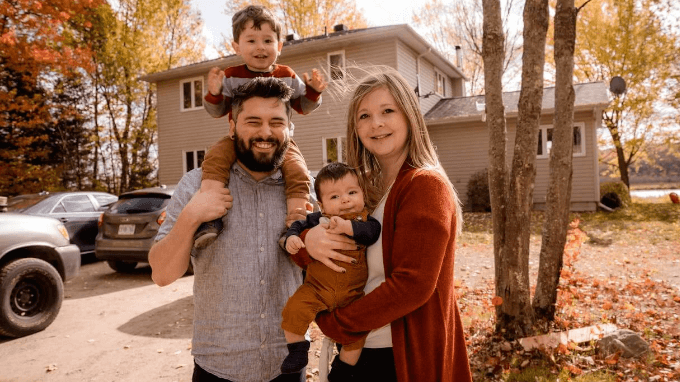Success Stories: How People Benefited from Social Housing

In the UK, social housing does more than just house people; it changes their lives. In a time when private rents have gone up and many people still can’t afford to buy their own home, social housing is a lifeline.
There are personal stories behind the policy debates and funding reports. These stories show how a stable, affordable home can be the start of something better.
This article explores real-life success stories of people who have thrived through social housing, with a focus on safety, security, independence and community. It also emphasizes more systemic advantages, such as better health and less government spending.
Investment in affordable housing is greatly valued, as these narratives demonstrate, whether through housing benefit, accessible rental rights or government schemes.
Understanding Social Housing in the UK
Social housing in the UK is designed to be affordable and secure accommodation, typically provided by local councils or housing associations.
Rent is comparatively lower than the private market. Eligibility is based on need and it prioritises low-income families and those who can lose their homes.
According to the Ministry of Housing, Communities & Local Government (MHCLG), over 4 million households were living in social housing as of 2021. Moreover 1.2 million individuals are on waiting lists for homes in England, despite the fact that demand is still significantly higher than supply (House of Commons Library, 2023).
In spite of this overwhelming demand, examples of successful implementation show what is achievable when everything goes according to plan.
Case Study 1: From Homelessness to the Boardroom – Raz’s Story
Source: Watford Community Housing
Life took a turn for the worst for Raz when he became homeless and struggled with a mental health crisis. Disconnected from the system supposed to safeguard her, she struggled to get constant help and lacked a secure place to reside.
It was through Watford Community Housing that she found a path forward.
After being offered a stable and affordable home, Raz gradually regained her confidence. The housing association not only gave her a roof over her head—it also introduced her to resident support programs.
She soon trained in housing management and became a non-executive board member, using her experience to advocate for others in similar situations.
Raz’s story is a powerful example of how social housing provides more than accommodation—it can rebuild lives and foster leadership.
Case Study 2: Building Homes, Building Futures – The Church Grove Project
Source: Rural Urban Synthesis Society (RUSS)
The Church Grove Project in Lewisham, spearheaded by RUSS, introduced an innovative approach to affordable housing. Residents didn’t just move into homes—they built them. This community-led self-build initiative enabled 36 households to construct their own dwellings in a supportive environment.
Future tenants received training in construction and sustainability, and were encouraged to participate in design and planning.
The model ensures long-term affordability through community land trusts and mixed tenures, including social rent, shared ownership, and intermediate rent.
For participants, this wasn’t just about saving money—it was about taking control.
Parents were able to offer their children a stable, nurturing environment, and some residents transitioned into new careers in construction and sustainability thanks to the skills they gained
Also Read: Top 5 Benefits for Low-Income Households in the UK
Case Study 3: Escaping Abuse, Rebuilding Life – Sarah’s Story
Source: Homefinder UK
Sarah (a pseudonym for confidentiality) spent years trapped in a violent domestic relationship. She and her two young children lived in fear, with limited financial resources and no viable way out—until she was referred to Homefinder UK.
Through the platform, Sarah found a permanent home several counties away, where her abuser could not reach her.
This relocation was made possible by a government scheme aimed at helping domestic abuse survivors access housing quickly and discreetly.
With stable housing secured, Sarah focused on healing. She began a counselling course at a local college, found part-time work, and enrolled her children in school.
She now supports other women who have faced similar experiences.
Case Study 4: Independence Through Accessibility – Tom’s Journey
Source: Habinteg Housing Association
After years of being unable to access her garden due to mobility barriers, Petula Bone—a passionate gardener and wheelchair user—can finally enjoy the outdoors again, thanks to her new fully accessible bungalow in Rawcliffe Grove, Hull.
Petula, who has lived with Multiple Sclerosis for over 30 years, previously faced daily challenges in a home that didn’t accommodate her needs. Stairs at the entrance kept her from reaching her garden, and the layout inside led to multiple falls, one of which resulted in a broken ankle and months of requiring in-home care.
Now, in her new home developed by Habinteg Housing Association in partnership with Hull City Council, everything has changed. Her new property features:
- Level access to the garden
- Wide doorways for easy movement
- Ample storage space for her wheelchair
- A wheelchair-friendly kitchen and bathroom
With these thoughtful design features, Petula can now move around her home with confidence, cook meals, and tend to her beloved garden—all without fear or physical strain.
“I found it to be an absolute miracle that anything like this would happen to us,” she says. “I can finally feel normal again.”
Petula’s experience is a powerful reminder of how accessible housing can restore independence and dignity, helping people thrive in the place they call home.
Beyond the Individual: Societal Gains of Social Housing
1. Lower Long-Term Government Spending
Investing in social housing is not just a moral decision—it’s an economic one. According to a joint report by Shelter and the National Housing Federation, building 90,000 new social homes a year would reduce the housing benefit bill by £24.5 billion over 30 years due to lower rents and reduced demand for temporary housing (Shelter & NHF, 2019).
2. Improved Health and Well-Being
The Building Research Establishment (BRE) found that poor housing conditions contribute to physical and mental health issues, costing the NHS £1.4 billion annually in England. Properly maintained affordable housing reduces:
- Respiratory diseases caused by mould
- Accidents from unsafe homes
- Stress and depression from overcrowding
3. Promoting Social Integration
By combining social housing with developments of mixed-income, local councils are creating communities which are inclusive.
The result is reduction in segregation, better public services and shared social infrastructure like schools, parks, and transport links etc.
Also Read: Top 5 Government Schemes Every UK Homebuyer Should Know About
Challenges Ahead: Demand Outstripping Supply
Despite the compelling benefits, the UK faces a social housing crisis. According to the House of Commons Library (2023), waiting lists for social housing have remained stubbornly high due to:
- Decades of underbuilding
- Right-to-Buy policies not replenishing lost stock
- Limited land and rising construction costs
To ensure that more people can benefit like Raz, Sarah, or the Khan family, the following actions are needed:
- Boosting investment in government schemes
- Supporting housing associations and community groups
- Educating the public to reduce the stigma around rental rights
Conclusion: Building More Than Homes
Offering a new beginning, dignity, and opportunity is what social housing is all about, not simply providing shelter.
Housing assistance, inclusive design, and relocation programs are all ways social housing improves people’s lives.
The effect, as can be seen, goes well beyond the confines of a single room.
These people have found a stable home and are now making significant contributions to their communities, proving that this is the initial step towards a better life.
Investment in social housing is an investment in people, public health, and long-term prosperity, according to the evidence that policymakers should consider.







